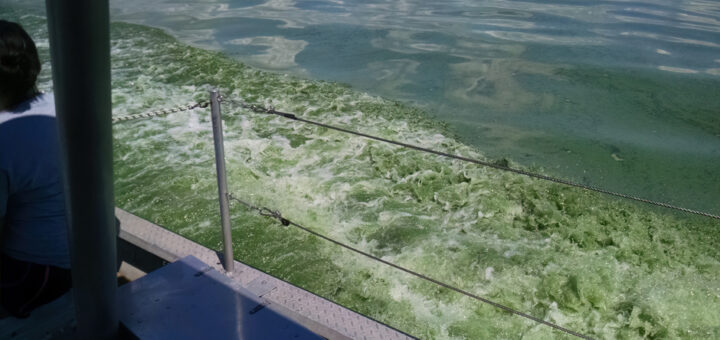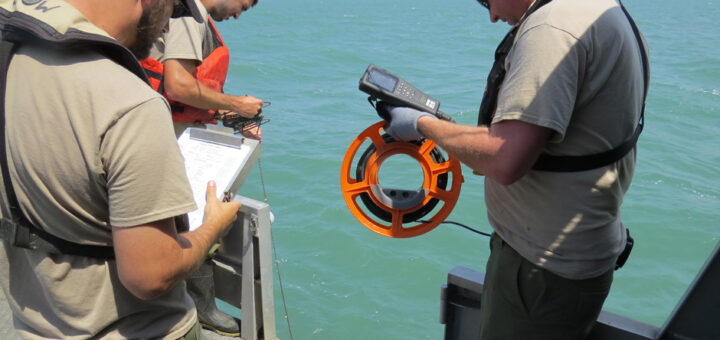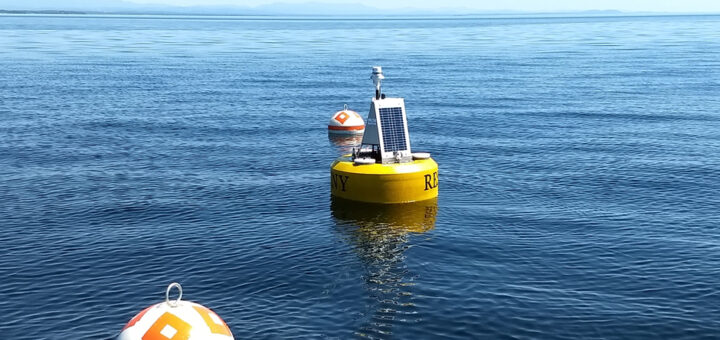Steelhead Trout

Scientific Names: Oncorhynchus mykiss
Common Names: Steelhead Trout
Steelhead Trout and Rainbow Trout are classed as the same species and have a similar appearance. The biggest difference between the two is that Rainbow Trout are native to cold-water tributaries of the Pacific Ocean, hatching and living their whole lives in freshwater, whereas Steelhead Trout go into freshwater areas to spawn but spend a large portion of their lives at sea.
Steelhead Trout usually return to their place of birth in order to mate – this is called anadromy. Unlike other Pacific salmonids, Steelhead Trout can spawn more than once and reach sexual maturity at two to three years of age. Young Steelhead Trout primarily feed on zooplankton, while adult fish feed on waterborne and terrestrial insects, mollusks, crustaceans, fish eggs or other small fishes.
Steelheads have been recorded to live up to 11 years and reach nearly 60 pounds in size. They are a dark olive color that shades to a silvery white at their bellies. A light stripe adorns their sides. When spawning, their coloration has been known to get darker and they develop spots heavily after surviving in the ocean for a few years.
Steelhead Trout have 8 to 12 rays in the anal fin, a mouth that doesn’t extend past the back of the eye and no teeth at the base of the tongue.
Steelhead Trout Interesting Facts
- They are generally more slender and streamlined than Rainbow Trout;
- spending 1 to 3 years in the ocean will cause Steelhead Trout to spot heavily, with some showing irregular spots;
- Steelhead Trout are highly sought after by anglers because of their fighting abilities;
- the fish are capable of surviving in a wide range of temperature conditions;
- and as Steelhead get closer to spawning, the stripe on their sides turn pinkish red.
Steelhead Trout Distribution
According to the U.S. Fish and Wildlife Service, Steelhead Trout can be found throughout California, Oregon and Washington. After spending three to four years in the Pacific Ocean, Steelhead Trout in this region return to freshwater tributaries along the coast to spawn. In most of these areas, Steelheads are listed as Threatened.
Steelhead Trout Biology
A 2012 study looked at the survival rates of Steelhead Trout as they migrated from Oregon’s Pacific tributaries into the ocean. Researchers compared run timing, migration rate, survival, condition factors, age and residence time to determine if survival was based on temporal variations or differences between estuaries. They found that most Steelhead Trout death occurred in just one tributary, marking the importance of geography in migration success.
A study published in Transactions of the American Fisheries Society found that water use on California farms was negatively impacting populations of endangered juvenile Steelhead Trout. With more vineyard acreage being used, researchers discovered more water loss in California streams.
Another study, published in the January 2011 edition of Molecular Ecology, found that the success of Steelhead Trout migrations and reproduction depend largely on Rainbow Trout. Up to 40 percent of the genes in Steelhead returning to freshwater to spawn came from Rainbow Trout, scientists found, proving that the two kinds of trout interbreed in large numbers.
References Cited
- http://www.nmfs.noaa.gov/pr/species/fish/steelheadtrout.htm
- http://www.nwf.org/Wildlife/Wildlife-Library/Amphibians-Reptiles-and-Fish/Rainbow-Trout-or-Steelhead.aspx
- http://wdfw.wa.gov/fishing/salmon/steelhead.html
- http://www.adfg.alaska.gov/index.cfm?adfg=steelhead.main
- https://wildlife.ca.gov/Conservation/Inland-Fisheries/Steelhead-Report-Card
- http://www.biologicaldiversity.org/species/fish/southern_California_steelhead_trout/
- http://dnr.wi.gov/org/caer/ce/eek/critter/fish/rainbowtrout.htm
- http://link.springer.com/article/10.1007/s10641-012-0080-8#page-1
- http://oregonstate.edu/ua/ncs/archives/2011/jan/wild-rainbow-trout-critical-health-steelhead-populations
Steelhead Trout article by Daniel Kelly, Fondriest Environmental, June 2014










[…] the recovery process for lakes subjected to airborne mercury from smokestacks; and growth rates of rainbow trout that have been selectively bred for aquaculture. Other research projects are looking into the […]